We have all been dazzled by the artists’ visions of great cities in science fiction movies, like Metropolis, Things to Come, Blade Runner, The Fifth Element, the cities of Star Wars, Trantor in the TV series Foundation or the glimpses we’ve had of Gallifrey in the later Doctor Who stories. But I’m more interested in the amazing cities in science fiction novels. Many of these are more carefully worked out than those in films simply because we usually see the characters interacting with the built environment in more detail. Instead of glimpses in the CGI background that we often get today, with most live action in more limited stage sets, writers have to show how their cities actually work for the people who inhabit them.
I’ve picked out four science fictional cities that give me a real sense of what life in them would be like. That includes not just the physical sense of how they’re built and the technologies their citizens depend on for everyday living but also the social roles partly shaped by the city environment and economic and political life. What do people become in these environments? How much are their lives and careers shaped by the forces at work in the city? This is an immense subject so this is a first try at drawing out life in a few cities in science fiction novels. There will be more installments to follow.
We by Yevgeny Zamyatin (1921)
Zamyatin’s beautiful and terrifying We describes a future life in which people and structures alike are controlled by mathematical perfection. Great glass buildings soar high above a surrounding Green Wall that keeps out everything wild. The occupants’ lives are measured carefully, down to the minute, and are on full view to one another through the glass walls of their apartments. Anyone who violates this immaculate order is subject to public execution, yet the cool precision of the city, constantly praised by the narrator, D-503 seems belied by his exuberance and emotional delight in the unfreedom of life. There are public spaces in the city but are mostly used as venues to instruct and control the population. Finally, the dictator known as the Benefactor directs everyone to submit to a brain operation that will remove all emotion and imagination from their lives. As the first ranks of these altered people emerge, they march in terrifying lock-step, urging all to follow their example. A secret group emerges to rebel and break through the Green Wall, but, as in George Orwell’s 1984, order and coercion prevail. In this case, the city is the physical counterpart to emotionless, mathematical order aimed at walling out all attempts at independent human agency.
Foundation by Isaac Asimov (1951)
One of the most influential science fiction cities, Trantor, of Asimov’s Foundation series, was the planet spanning capital of the great Galactic Empire. The entire surface of the planet was covered in steel, and most of its forty billion inhabitants lived below the surface. There they carried on the business of empire, dependent totally on imported food and other essentials. The people occupied themselves as bureaucrats and managers, overseeing the infinitely complex affairs of millions of worlds subservient to the emperor. His palace was an island of a hundred acres of natural soil, covered with elaborate gardens to embellish the imperial palace. But everyone else mostly lived underground. Gaal Dornick, newly arrived from a distant world to work with Hari Seldon, is eager to see the city from the viewing terrace about 500 feet above the surface. He looks out over the gray surface and roofs of varying heights and asks a stranger why there aren’t more people crowding in to see the view. His reply captures the essence of what life in a steel city constructed mostly below ground was like:
“If you’re born in a cubicle and grow up in a corridor, and work in a cell, and vacation in a crowded sun-room, then coming up into the open with nothing but sky over you might just give you a nervous breakdown.”
Foundation, Avon paperback edition of 1966, p.15
The Foundation series is all about the fall of the Galactic Empire, and in Foundation’s Edge, written thirty years after the first book in the series, we learn more about the destruction of the city and what it later became hundreds of years after its downfall. All the metal surface, the great underground structure and the life lived in cubicles are gone. People have become self-sufficient farmers on the sparsely populated surface, free of the literal confining metal barriers of lives focused solely on administration. Though billions died in the ruin of the city, the lives of the survivors reflected a complete turnabout and rejection of the old way of life in the one-time imperial capital.
Perdido Street Station by China Miéville (2000)
Miéville’s Perdido Street Station introduced the strange city of New Crobuzon, a decaying but still functioning urban region at the confluence of two rivers. We see it first through the eyes of a newly arriving visitor, a mysterious wounded creature, a garuda, whom people fear, as he is ferried into the heart of the city over the murky, filthy waters of the river, choked with dead fish and frogs. All he sees is loathsome decay, rotting buildings, streets strewn with rubbish and broken glass, the twin pillars of the Old City’s gate, once splendid, now withered by acid like spindly old screws. New Crobuzon is inhabited by a mix of humans, bizarrely cross-bred species, and Remades, beings patched together from the enormous piles of decaying machinery that are everywhere. There are also powerful and terrifying trans-dimensional beings that can be summoned by city leaders in times of crisis.
Isaac, a scientist-outcast, shunned by his peers because of his transgressive research into new forms of energy and because of his love for an insectoid part-woman named Lin, lives in a dishevelled apartment above a crowded market street where everything is for sale in a chaos of trade. The garuda, a winged creature who has lost his wings because of a crime he committed in his native land, seeks help from Isaac to restore his power of flight. That leads to a twisty plot involving a dangerous mob leader, escaped monstrous creatures, battles with the Remades, the summoning of the transdimensional monster. Ultimately, the garuda’s effort to regain his wings fail, and he accepts his fate to live as a man rather than as a mixed creature, fitting into no world comfortably. He carries on as a citizen of New Crobuzon, which starts to appear to him in a different light.
Revelation Space by Alastair Reynolds (2000)
Although Alastair Reynolds’ Revelation Space universe, depicted in many novels and stories, spans multiple worlds, for me its great home is Chasm City on the planet Yellowstone. Aptly named after the US region of sulfurous springs and geothermal geysers, Yellowstone had no breathable atmosphere, so its inhabitants constructed a city of multiple domes around the edges of a great crater. Chasm City was once the center of a thriving civilization with the Glitterband, a ring of orbiting habitats circling the planet above the city, offering every type of environment and pasttime for the wealthy. But the city was invaded by a strange disease called the Melding Plague that attacked the nano structure of all the buildings and economic activities on which Chasm City depended. Millions died, most of the structures wilted and collapsed into strange shapes, the habitats of the Glitterband succumbed and even fleeing spaceships could not move quickly enough to avoid the plague’s deadly consuming power.
Despite the devastation, people continued to work out ways to live in the twisted remains of Chasm City, some even in the depths of the crater itself. Older structures that had not been built with nano technology remained untouched, but the more recent and much taller buildings had sagged into bizarre shapes. In the upper reaches of some, however, there were still livable apartments and so wealthy people could congregate there as they chose. Within this strange setting, Reynolds plays out many stories in this setting with characters who have made their adaptations to live in Chasm City. There are hermetics, humans with numerous mechanical implants that protect themselves by living within palanquins and speaking through mechanical voice boxes; Ultras who have loaded their bodies with so many implants that they are more machine than anything else; Conjoiners who linked their minds with thousands of others, all of whom have access to the pooled memories of their people – and an assortment of assassins, criminals, members of hunted political factions as well as the wealthy few who can amuse themselves with dangerous life-threatening games. Chasm City is one of the great imaginative creations at the heart of a complex universe that keeps unfolding through seven novels and fifteen novellas and short stories.
Cities are distinctively human artifacts, sometimes organizing as if by themselves, but usually guided by a controlling vision imposed by law or economics, or, in science fiction, by forces that have transcended the merely human. In these cases, humans emerge who adapt to confining environments but also fight back to find life on their own terms. In the next installment of this series, I’ll look at several more recent examples of fictional cities and how they shape the lives of their citizens.
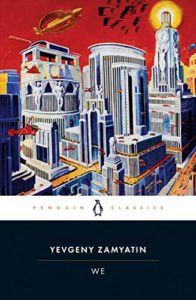

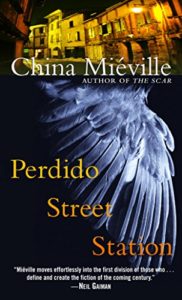
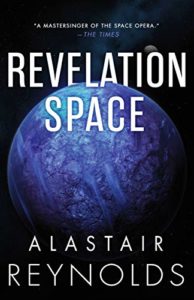
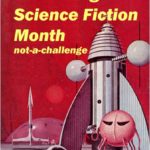
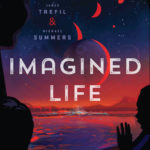
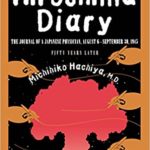

Leave a Reply